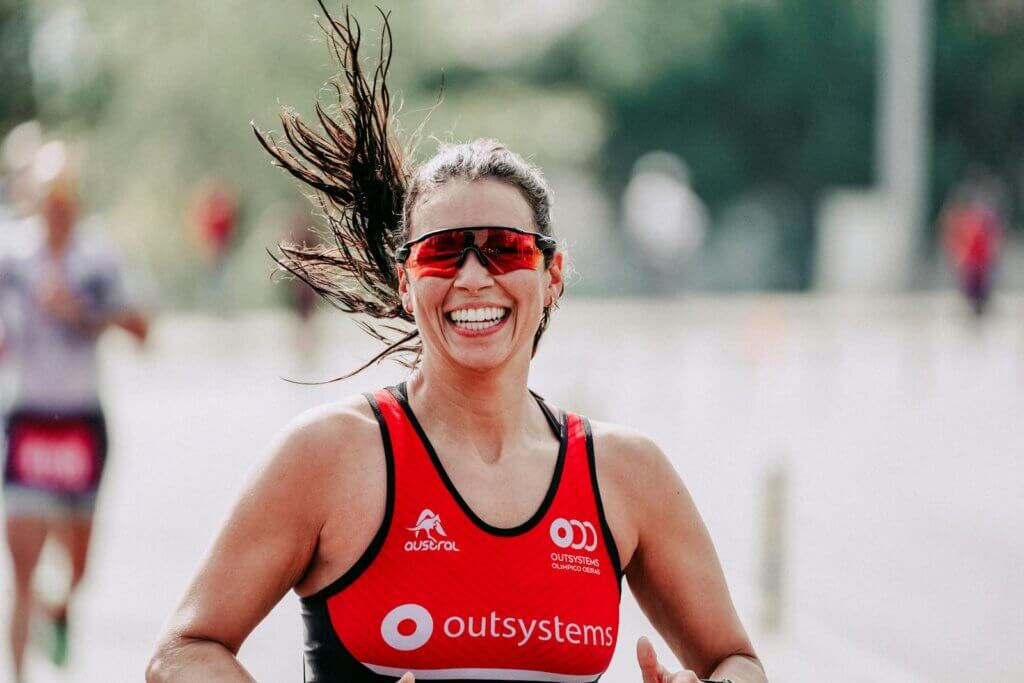Are you tired of compromising clear vision while enjoying your runs? Running with glasses doesn’t have to be a hindrance; in fact, it can enhance your overall experience.
Whether you’re a seasoned runner or just starting out, this blog post is your go-to guide for achieving optimal vision and performance while hitting the pavement.
We’ll explore the pros and cons of running with glasses on, provide you with 11 essential tips for keeping your glasses secure, and even discuss the debate between glasses and contacts for runners. Get ready to see the world in a whole new way as we dive into the world of running with glasses!
Table of Contents
Is it OK to run with glasses on?
Running with glasses on is generally OK but comes with considerations. On one side, prescription glasses improve vision, making it safer for runners to navigate their surroundings, essential for avoiding obstacles and ensuring safety.
About 75% of adults use some form of vision correction, with over 64% wearing glasses, highlighting the potential need for glasses while running. However, glasses can slip, fog up, or get damaged during intense activity.
Specialized sports glasses or straps can mitigate these issues, ensuring glasses stay secure and clear. Ultimately, the choice depends on personal comfort, the intensity of the activity, and the suitability of the glasses for physical exercise.
Read: Running With A Weight Vest
Pros of Running With Glasses On

Running with glasses on might sound tricky at first, but it has several benefits that can make your run safer and more enjoyable. Let’s explore the advantages:
Clear Vision
The most obvious benefit is clear vision. For those of us who need glasses to see well, wearing them while running helps us to see the path clearly.
This means you can avoid obstacles like rocks, holes, or branches that could cause you to trip and fall. It’s like the difference between watching a blurry TV and one in high-definition – everything is clearer and sharper.
Safety
With clear vision comes increased safety. Being able to see where you’re going and what’s coming up not only helps you avoid accidents but also makes you more aware of your surroundings.
If you’re running on a busy street, for example, it’s important to see cars, cyclists, and other runners clearly. This awareness helps prevent accidents and keeps you safe on your run.
Comfort and Confidence
Wearing glasses can also increase your comfort and confidence while running. If you’re constantly squinting or struggling to see, it can make your run feel more difficult and less enjoyable.
With glasses, you don’t have to worry about not seeing clearly, which means you can focus on your running form, breathing, and the enjoyment of the run itself. This can make your runs feel easier and more productive.
Specialized Options
For those concerned about glasses slipping or fogging up, there are specialized options available. Sports glasses are designed to stay secure on your face, even during intense activity, and often come with anti-fog features.
Additionally, you can use straps to keep your regular glasses in place. These options mean that you don’t have to compromise on vision or safety, no matter how fast or far you’re running.
Cons of Running With Glasses On
While running with glasses has its benefits, there are also some drawbacks to consider. Let’s discuss some of the challenges that runners with glasses might face.
1. Slipping and Shifting
One common issue is that glasses can slip or shift while you’re running. When you sweat, your glasses might not stay in place, sliding down your nose or bouncing.
This can be distracting and require frequent adjustments, interrupting your rhythm and focus during the run.
2. Fogging Up
Another problem is fogging. When you’re working hard and sweating, your glasses can fog up, especially in cooler or humid conditions.
This reduces visibility, which can be annoying at best and unsafe at worst, as it makes it harder to see obstacles or changes in terrain.
3. Risk of Damage
There’s always a risk of damage when you wear glasses during physical activities. Falling, bumping into something, or even just the wear and tear of constantly putting on and taking off your glasses can lead to scratches or breaks.
Replacing or repairing glasses can be costly, with the average pair of prescription glasses costing over $200.
4. Pressure and Discomfort
For some runners, wearing glasses for long periods can cause discomfort or pressure on the nose and behind the ears.
This is especially true for heavier frames or during longer runs. Over time, this discomfort can distract from the enjoyment of running and may even lead to headaches.
5. Alternatives and Solutions
While these drawbacks are significant, there are solutions available. Contact lenses, prescription sports goggles, or even corrective surgeries like LASIK offer alternatives to traditional glasses.
Each option comes with its own set of pros and cons, so it’s worth considering what works best for your lifestyle and needs.
Read: Running with a backpack
Tips for Running With Glasses On

Enhancing your running experience while wearing glasses is all about preparation and choosing the right gear. Here are 11 detailed tips to help you run comfortably and effectively with glasses.
1. Opt for Lightweight Frames
Select glasses that have lightweight frames to minimize discomfort and pressure on your nose and behind your ears. Materials such as titanium or lightweight plastic are excellent choices because they’re durable and comfortable for long runs.
2. Secure Your Glasses
A strap or ear hooks can be a game-changer for keeping your glasses in place. Adjustable straps that fit around your head or hooks that cling to your ears can prevent annoying slippage and constant readjustments during your run.
3. Go for Rubber Grips
Look for frames with rubber grips on the nose bridge and temples. These grips increase friction and prevent your glasses from sliding down your nose, especially as you start to sweat, ensuring a secure fit throughout your run.
4. Use Anti-Fog Solutions
To prevent your lenses from fogging up and obscuring your vision, apply anti-fog wipes or sprays before heading out. Alternatively, a thin layer of dish soap applied to your lenses, then gently wiped off, can provide a temporary fog-resistant barrier.
5. Transition Lenses Are Helpful
For those who run outdoors, transition lenses can significantly improve your running experience.
These lenses automatically adjust to changing light conditions, darkening in bright sunlight to reduce glare and protect your eyes, which means you won’t have to squint or struggle to see clearly.
6. Keep Your Glasses Clean
Starting your run with clean glasses can improve your visibility and safety. Use a microfiber cloth to remove fingerprints, dust, and smudges from your lenses. This simple step can prevent vision impairment during your runs.
7. Try Contact Lenses
On days when glasses seem too cumbersome, consider switching to contact lenses. They offer the vision correction you need without the worry of glasses bouncing around or fogging up, providing a liberating running experience.
8. Test Run New Glasses
Before committing to a long run with a new pair of glasses, do a short test run to check for comfort, fit, and stability. It’s crucial to ensure they won’t cause distractions or discomfort when you’re far from home.
9. Prepare for Weather Conditions
Anticipate changes in weather by choosing glasses with appropriate lens coatings for rain or cold conditions, or wear a cap with a brim to shield your glasses from raindrops and reduce lens fogging in cooler temperatures.
10. Have a Backup Plan
Always have a plan B, such as carrying a spare pair of glasses or a repair kit, especially during important races or on longer runs. This ensures that minor mishaps don’t derail your running plans.
11. Adjust As Needed
Be open to making adjustments based on the day’s conditions, your health, and personal comfort. Your needs can change based on numerous factors, so what works one day might not work the next.
How do I keep my glasses in place when running?

Keeping your glasses in place while running involves balancing comfort with practical solutions:
- Use Sports Straps: Secure your glasses with adjustable straps that prevent slipping during movement. However, some may find them uncomfortable or not stylish.
- Opt for Rubber Grips: Frames with rubber grips on the nose and temples offer stability. Yet, for those with sensitive skin, these grips might cause irritation over time.
- Consider Lightweight Frames: They reduce the likelihood of your glasses slipping off. But, they might not be as durable as heavier frames for everyday wear.
- Anti-Slip Nose Pads: Silicone nose pads can increase grip but may need frequent adjustments or replacements.
Read: Running at Night
Final Thoughts
As I wrap up this article, I want to personally address all you fellow runners out there who wear glasses. Running with glasses can be a challenge, but it’s definitely possible to achieve clear vision and enjoy your runs to the fullest.
We’ve explored the pros and cons, and I’ve shared with you 11 essential tips for running with glasses on, as well as running without them. Remember to find glasses that fit securely and comfortably, and consider options like sports frames or contact lenses if you prefer.
Embrace the freedom of running with a clear vision and let nothing hold you back. So lace up your shoes, put on those glasses, and hit the road with confidence. Happy running!


